January 25, 2008
Stained Glass Vision of William Blake
November 28th, 2007, was the 250th anniversary of the birth of William Blake. Around that time, I saw this Guardian article called Blakean Visions in south London. What caught my eye in the article was, of course, the image of a rather nice stained glass window, designed by John Hayward, from St. Mary's Battersea Old Church, London, England - the church in which Blake was married to Catherine Boucher in 1782.
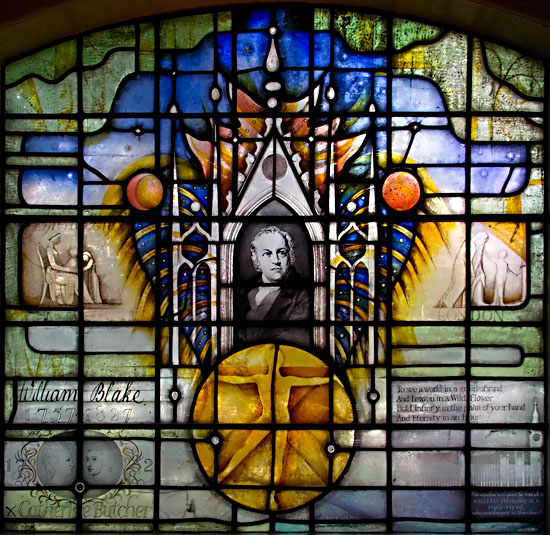
This photo (and all subsequent details of the Blake window) are courtesy of Flickrite mym, who has an amazing Flickr set of stained glass images. Thanks for the hi-res image, mym!
The church has a 'virtual tour' of their windows, with interesting information, starting with a rather funny story of just how 4 ground floor windows in a 1,000 year old church came to need new stained glass.
What interests me about this window are the references to Blake's work, in the details. What is referenced, how is it done and perhaps even a few thoughts on why ...
on to the details ...
from top left, then clockwise -
From the Title page of Songs of Innocence
The scene as depicted in the stained glass panel, with the original illustration detail on the right -
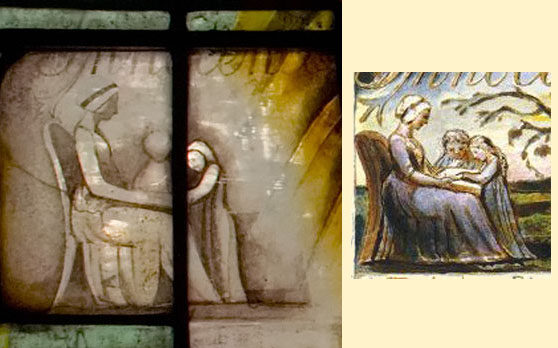
This is the illustration seen in context of an original full page...
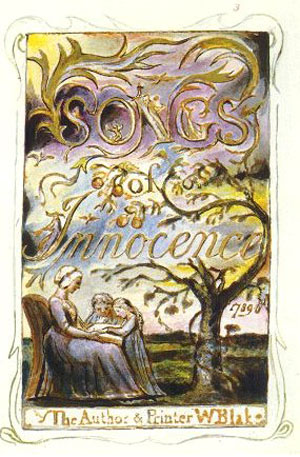
These "illuminated books" were all printed with a colored ink, then hand colored with watercolors. The William Blake Archive has an amazing collection of different versions of Songs of Innocence and of Experience.
This ia a screen shot of their comparisons on the WB Archive.
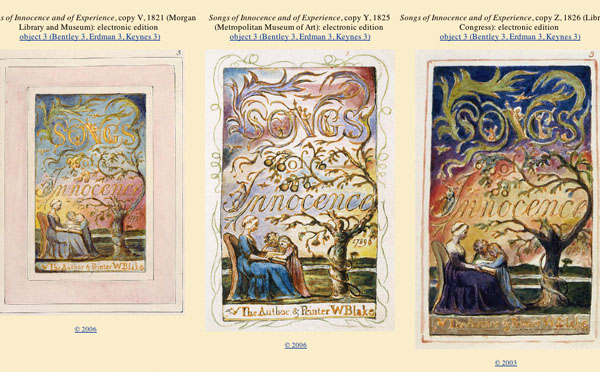
So, go to the William Blake Archive and drink it all in...
Central Portrait - William Blake
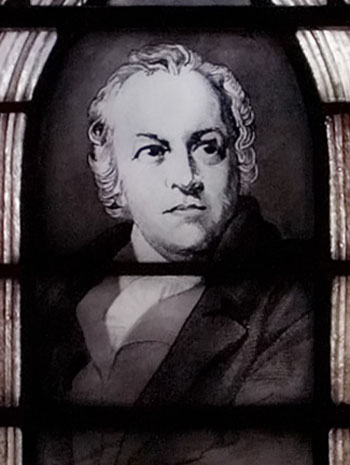
Derived from this Portrait of William Blake by Thomas Phillips -
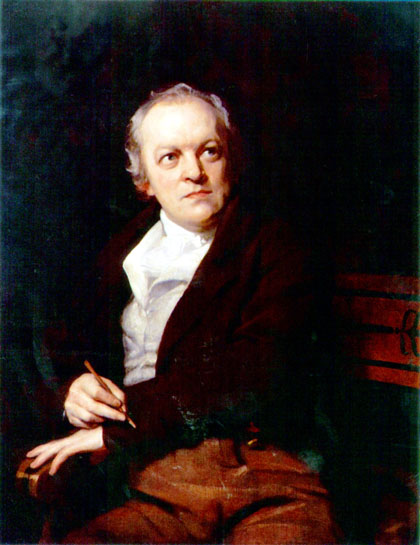
The painting is also the basis for this engraved version by Luigi Schiavonetti.
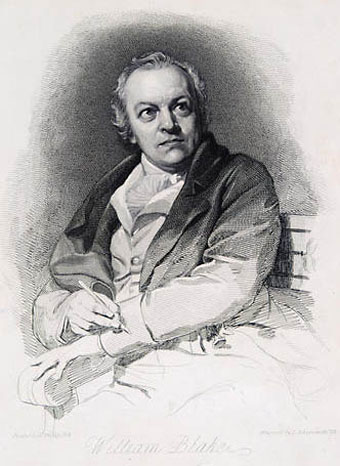
Here are all three faces placed together to provide a study in subtle facial differences. It may just be me, but I think the Hayward version makes Blake look a bit more refined and perhaps even aristocratic (which Blake certainly was not), while the Schiavonetti engraving seems to enhance the wild-eyed, visionary idea of Blake.
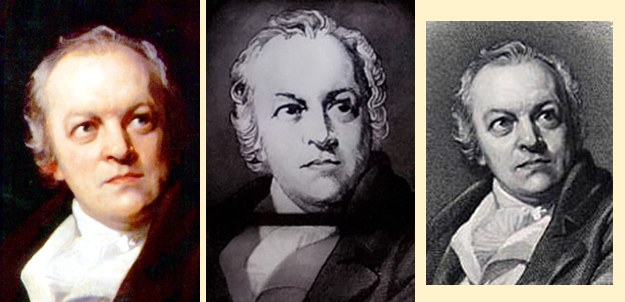
When I did my own Blake panel in the mid 1990's. I used the engraving by Schiavenetti (though altered to a soft focus) as the basis for the face, rather than the painting.
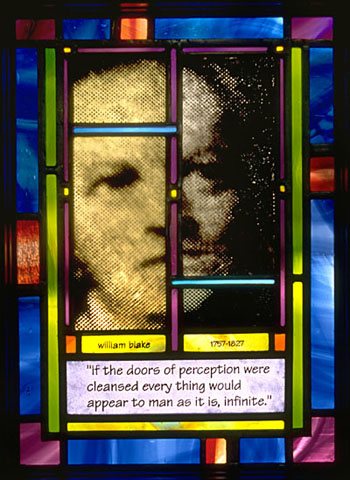
From London, in Songs of Experience
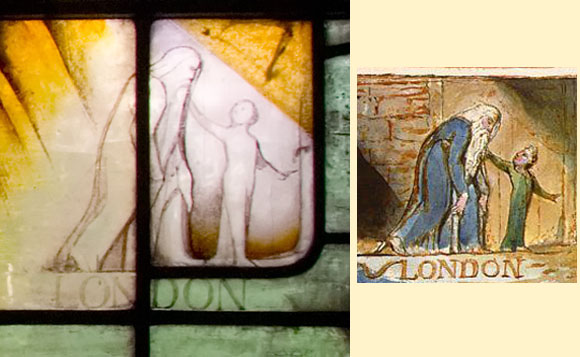
in context of the full page...
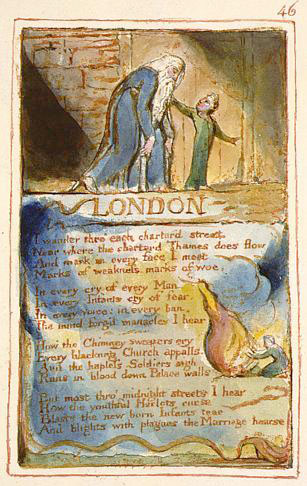
From Auguries of Innocence
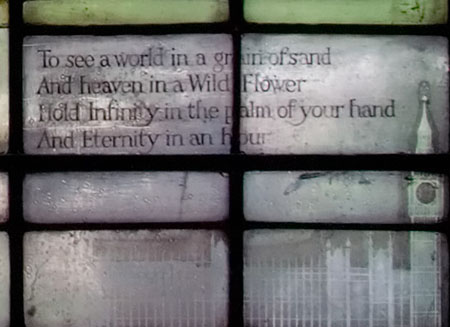
the quote -
To see a World in a Grain of Sand
And a Heaven in a Wild Flower,
Hold Infinity in the palm of your hand
And Eternity in an hour.
This is one of the most popular quotes from Blake. This expresses the notion of Blake as 'visionary', which can be interpreted as Blake literally seeing figures in thin air (which he did) or taken more figuratively as the notion of the importance of imagination.
The image of the Houses of Parliament is there to make a connection with the late William Hamling, MP, in whose memory the window was given.
Albion
and now... the most abstracted of the derivations
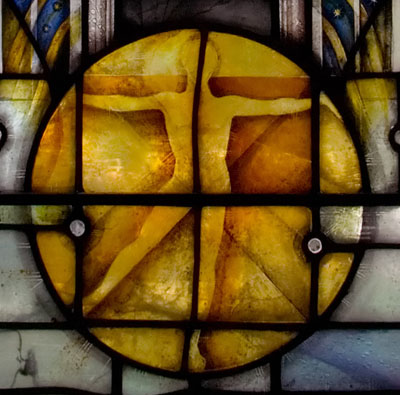
Derived from the painting called Albion.
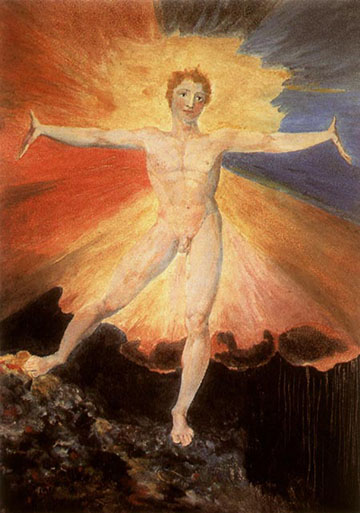
Albion was used by Blake both as a symbol for old England, and as one of the figures in his madcap pantheon of cosmological figures. One can only conjecture that the image was abstracted due to the fact that christian religious art rarely features full male frontal nudity... and notice how, even in this abstracted form, the leadlines seem to conveniently cross at the appropriate place, relieving the artist of the the decision of how to adequately abstract the male genitalia.
Drawn Portraits
Finally, there is this, which is a bit of a puzzle.
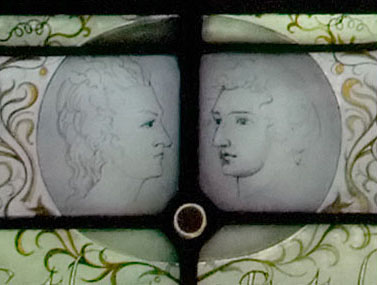
On first glance at this I did not recognize the specific images, other than to see that they were derived from drawings and to assume that the portrait on the left is a woman and the portrait on the right is a man. Well, both are derived from drawings, otherwise wrong.
This is text from the St. Mary's website -
The wedding is suggested by a wedding ring between two pencil portraits. The one of the left is William drawn by Catherine, the one on the right, Catherine as drawn by William.
So, the figure on the left is derived from this drawing of William by Catherine, with additional support for this from this page from the Tate website.
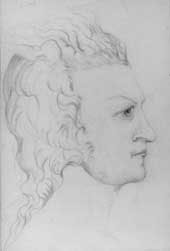
I couldn't find any drawing on the web or mention of a drawing that would show where the drawing for the the figure on the right is, but there is no reason to doubt that it is Catherine as drawn by William.
Academics have had a field day on theories regarding Blake and Gender, with unfortunate examples to be seen here, here, and here. I will not attempt to add to any such theories, but I will say that these two drawings have an untold story to tell.
In Conclusion...
One thing to keep in mind in viewing this window is that all the references to Blake and his work are to the 'safe' and 'family friendly' Blake, the Blake of Songs of Innocence and Songs of Experience. This window does not reference the 'mad' Blake, the 'visionary' blake, or 'outsider' Blake. The Blake of Ghost of a Flea or other visionary portraits, and nothing from the more incomprehensible prophetic books such as Jerusalem and Milton.
Understandable, seeing that the window is in a church.
Still, William Blake, surprisingly to me, cuts a big figure in contemporary popular culture, and that tends to feature the darker, weirder, or at least more visionary, Blake. There are even the appearances in mainstream movies that include brief references in comedies like Bull Durham and Talladega Nights: the Ballad of Ricky Bobby to more substantial references in darker films like Dead Man and the Red Dragon movies. This would not be the version of Blake likely to make it into church decoration.
My favorite of Blake's works is Marriage of Heaven and Hell, which is more in the middle in terms of Blakean weirdness. It's a little more readable and accessible, and seeing that it's structured as a series of short sections (memorable fancies, 'Proverbs of Hell', etc) you can read it in small sips.
My own well worn copy, which I've had for almost 30 years.
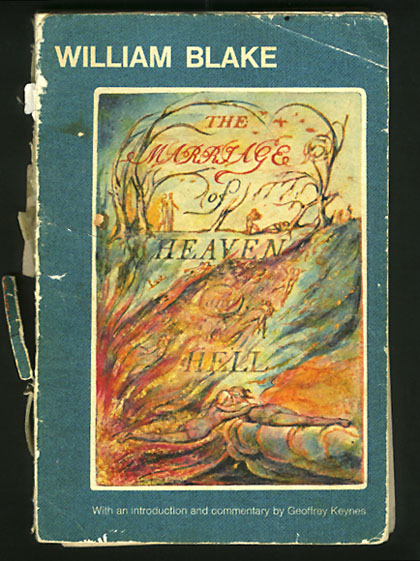
You can see it and read it for yourself here.